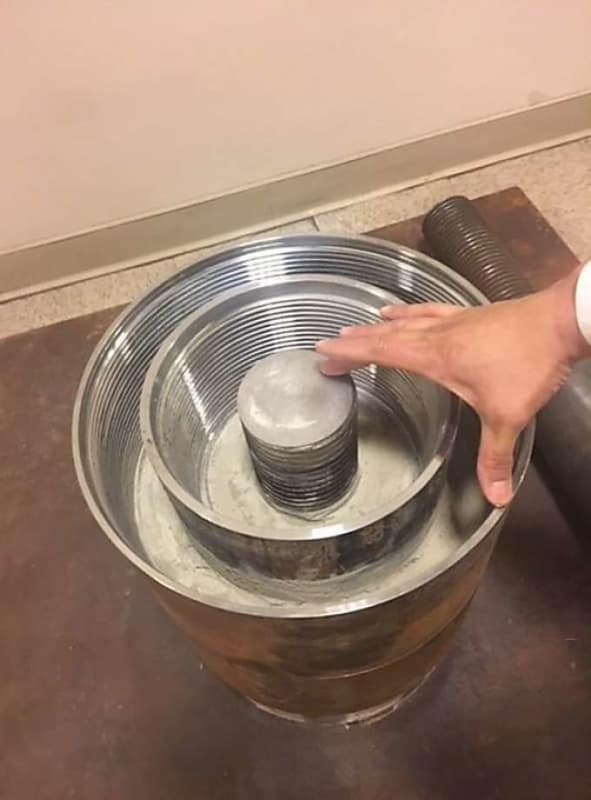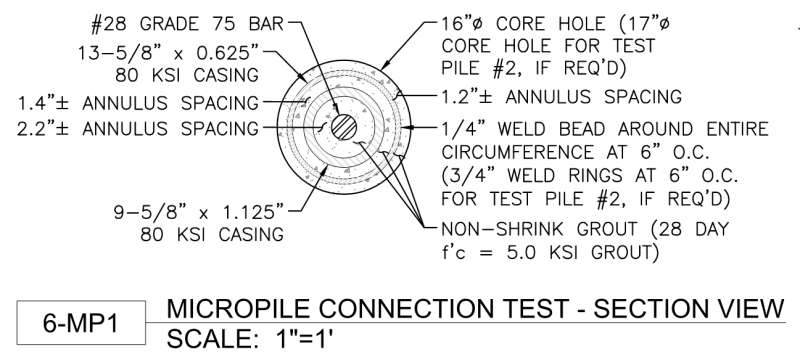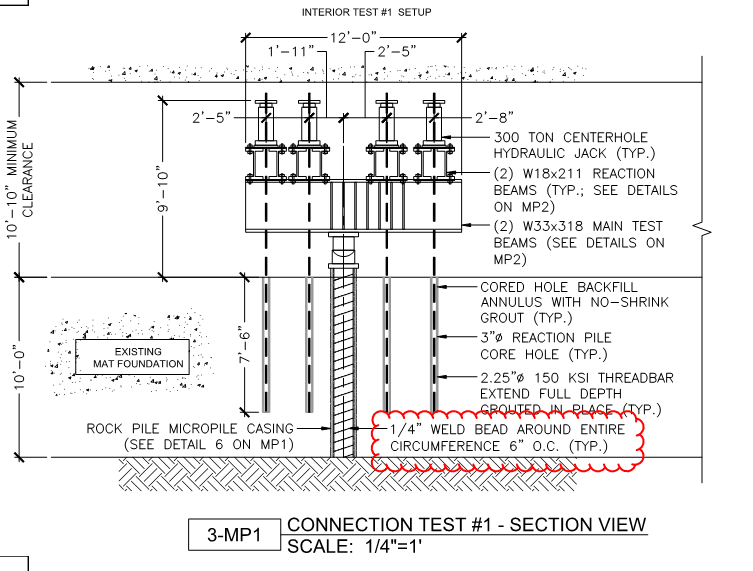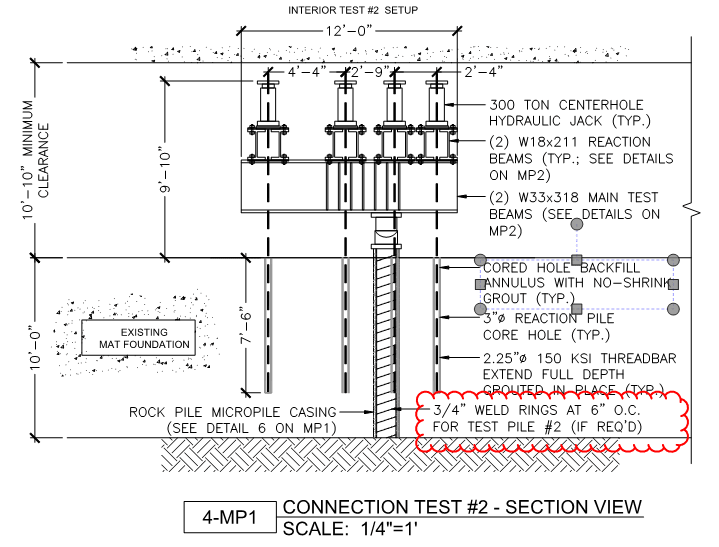epoxybot
Structural
- Jul 31, 2006
- 603
San Francisco Supervisor Aaron Peskin has subpoenaed Ramin Golesorkhi, PhD, PE, GE, F. ASCE. Dr. Golesorkhi & Christopher A. Ridley, G.E. were the Geotechnical Engineers at Treadwell Rollo who made the soil determinations & piling recommendations for the 301 Mission Project. Dr. Golesorkhi is currently the V.P. and a Principal at the San Francisco offices of Langan Engineering & Environmental Services Inc. The engineering services of the San Francisco office were formerly a Treadwell & Rollo enterprise. Langan acquired Treadwell & Rollo in late 2010.
The founder of Treadwell & Rollo, Don Treadwell passed away in 2016. Link
Dr. Ramin Golesorkhi was originally subpoenaed to testify before the S.F. Government Audit and Oversight Committee on Apr. 4, 2018 but it seems a copy of the subpoena was later served to legal representation and the hearing will commence at 10AM PST next Wednesday the 18th of April. The hearing will become available for online viewing the following week. Link
The subpoena seeks to have Dr. Golesorkhi provide testimony regarding the tower foundation at 301 Mission and also the Treadwell & Rollo foundation for the controversial, approx 50 story concrete tower originally proposed at 80 Natoma. The 301 Mission project was determined to be on much poorer soil that 80 Natoma.
Indeed, the Transbay Joint Powers Authority's (TJPA) own Seismic modeling of the new Transbay Center & Train Box separates the ground along the train box foot print into 4 separate zones with the ground immediately adjacent to the Millennium Tower in one soil zone and the new Sales Force Tower across Fremont St. and West of the Millennium Tower in another soil zone. The TJPA modeled the section of the train box adjacent to Millennium Tower, not only on the basis of the soil conditions but also concerning the interactions with 301 Mission & the new 199 Fremont tower. The two towers bookend the Transbay Center which require a considerable number of micropiles to keep it from popping out of the ground. The conclusions were that the neighboring structures played a greater influence on the way the Train box responded to a seismic event than the poor soil conditions. The report also concludes that some ground motions were also faster. They may be faster than have been calculated for the Millennium Tower in the SG&H Seismic Report. Then again the SG&H report isn't worth the paper it was printed on if the Seismic Soil Class for the 301 Mission Tower was Type "E" instead of the Type "D" as designed. Unfortunately the article does not indicate what the Seismic Soil classification was determined to be. Link
Surprisingly after more than 8 hearings regarding 301 Mission and in 2004 perhaps 12 to 16 hearings & meetings over the 80 Natoma project, no one has sufficiently explained to any of the officials in San Francisco, up to & including the engineering staff at San Francisco's Dept of Building Inspection the "Compensation" part of a Compensated (Fully/Partially) Raft Foundation.
Dr. Ramin Golesorkhi is also one of the co-authors of the 2016 publication "Performance-Based Seismic Design for Tall Buildings" published by the Council on Tall Buildings & Urban Habitat. The other co-authors are Leonard Joseph P.E., S.E. - Principal, Thornton Tomasetti, Ron Klemencic P.E., S.E. - President, Magnusson Klemencic Associates, David Shook P.E., S.E. - Skidmore Owings & Merrill LLP & John Viise P.E., S.E. - Thornton Tomasetti. Link
Christopher A. Ridley, G.E., who has not thus far been subpoenaed departed Treadwell & Rollo and along with Frank Rollo have formed Rollo and Ridley. Geotechnical Rngineers.
The founder of Treadwell & Rollo, Don Treadwell passed away in 2016. Link
Dr. Ramin Golesorkhi was originally subpoenaed to testify before the S.F. Government Audit and Oversight Committee on Apr. 4, 2018 but it seems a copy of the subpoena was later served to legal representation and the hearing will commence at 10AM PST next Wednesday the 18th of April. The hearing will become available for online viewing the following week. Link
The subpoena seeks to have Dr. Golesorkhi provide testimony regarding the tower foundation at 301 Mission and also the Treadwell & Rollo foundation for the controversial, approx 50 story concrete tower originally proposed at 80 Natoma. The 301 Mission project was determined to be on much poorer soil that 80 Natoma.
Indeed, the Transbay Joint Powers Authority's (TJPA) own Seismic modeling of the new Transbay Center & Train Box separates the ground along the train box foot print into 4 separate zones with the ground immediately adjacent to the Millennium Tower in one soil zone and the new Sales Force Tower across Fremont St. and West of the Millennium Tower in another soil zone. The TJPA modeled the section of the train box adjacent to Millennium Tower, not only on the basis of the soil conditions but also concerning the interactions with 301 Mission & the new 199 Fremont tower. The two towers bookend the Transbay Center which require a considerable number of micropiles to keep it from popping out of the ground. The conclusions were that the neighboring structures played a greater influence on the way the Train box responded to a seismic event than the poor soil conditions. The report also concludes that some ground motions were also faster. They may be faster than have been calculated for the Millennium Tower in the SG&H Seismic Report. Then again the SG&H report isn't worth the paper it was printed on if the Seismic Soil Class for the 301 Mission Tower was Type "E" instead of the Type "D" as designed. Unfortunately the article does not indicate what the Seismic Soil classification was determined to be. Link
Surprisingly after more than 8 hearings regarding 301 Mission and in 2004 perhaps 12 to 16 hearings & meetings over the 80 Natoma project, no one has sufficiently explained to any of the officials in San Francisco, up to & including the engineering staff at San Francisco's Dept of Building Inspection the "Compensation" part of a Compensated (Fully/Partially) Raft Foundation.
Dr. Ramin Golesorkhi is also one of the co-authors of the 2016 publication "Performance-Based Seismic Design for Tall Buildings" published by the Council on Tall Buildings & Urban Habitat. The other co-authors are Leonard Joseph P.E., S.E. - Principal, Thornton Tomasetti, Ron Klemencic P.E., S.E. - President, Magnusson Klemencic Associates, David Shook P.E., S.E. - Skidmore Owings & Merrill LLP & John Viise P.E., S.E. - Thornton Tomasetti. Link
Christopher A. Ridley, G.E., who has not thus far been subpoenaed departed Treadwell & Rollo and along with Frank Rollo have formed Rollo and Ridley. Geotechnical Rngineers.





